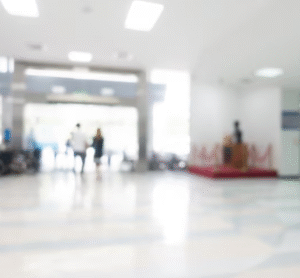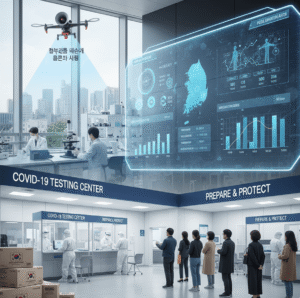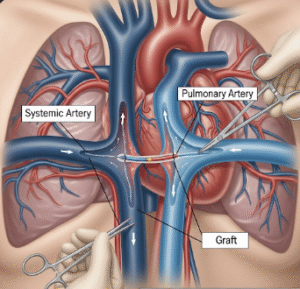Overview
Kyphoplasty is a minimally invasive surgical procedure used to treat vertebral compression fractures, often caused by osteoporosis, trauma, or metastatic tumors. The procedure stabilizes the fractured vertebra, restores vertebral height, and relieves pain, significantly improving mobility and quality of life.
South Korea is known for advanced spinal surgery, precise imaging guidance, and expert orthopedic and neurosurgical teams, making it a preferred destination for patients seeking safe, effective, and minimally invasive spinal fracture treatment.
What is Kyphoplasty?
Kyphoplasty involves:
- Insertion of a balloon into the collapsed vertebra to gently restore height
- Injection of bone cement to stabilize the vertebra and prevent further collapse
- Immediate pain relief and spinal stabilization
Indications:
- Osteoporotic vertebral compression fractures
- Trauma-induced vertebral fractures
- Vertebral fractures from cancer or metastasis
- Persistent back pain unresponsive to conservative treatments
Goal:
- Relieve pain and discomfort
- Restore spinal alignment and vertebral height
- Improve mobility and prevent future vertebral collapse
What are the Benefits?
- Rapid pain relief → Most patients experience relief within 24–48 hours
- Restores vertebral height and spinal alignment → Improves posture and reduces kyphosis
- Minimally invasive → Reduced recovery time compared to open spinal surgery
- Prevents further vertebral collapse → Stabilizes the affected vertebra
- Outpatient or short hospital stay → Quick return to daily activities
- Expert care in Korea → High precision with imaging guidance and advanced surgical techniques
Procedure Details
1) How should I prepare for Kyphoplasty?
- Pre-procedure evaluation → MRI, CT, or X-rays to assess fracture location and severity
- Medical clearance → Blood tests, cardiac evaluation, and review of medications
- Medication review → Stop blood thinners or anticoagulants as advised
- Pre-procedure consultation → Discuss risks, benefits, anesthesia, and post-operative care
- Lifestyle preparation → Arrange transportation and plan for a short recovery period
2) What happens during the procedure?
- Anesthesia → Local anesthesia with sedation or general anesthesia
- Patient positioning → Prone position on the operating table
- Surgical steps →
- Small incision made over the affected vertebra
- Balloon inserted into vertebra to restore height
- Balloon removed and bone cement injected to stabilize vertebra
- Cement hardens within minutes, providing immediate support
- Duration → 45–90 minutes depending on number of vertebrae treated
- Monitoring → Continuous vital signs and imaging to ensure proper placement
3) What happens after Kyphoplasty?
- Immediate post-operative care → Observation for a few hours; monitor pain and mobility
- Pain management → Mild analgesics prescribed if needed
- Activity restrictions → Avoid heavy lifting and strenuous activity for 2–4 weeks
- Follow-up visits → X-rays to confirm vertebral stability; assess pain and mobility
- Physical therapy → Optional exercises to strengthen back and improve posture
Risks / Benefits
Risks
- ➤ Infection at the incision or vertebra site
- ➤ Bleeding or hematoma
- ➤ Cement leakage (rare but possible)
- ➤ Nerve irritation or injury (rare)
- ➤ Allergic reaction to bone cement
Benefits
- ➤ Rapid pain relief and improved mobility
- ➤ Restores vertebral height and spinal alignment
- ➤ Minimally invasive with short recovery time
- ➤ Prevents further vertebral collapse
- ➤ High success rates with expert Korean orthopedic and spinal surgeons
Recovery and Outlook
- Immediate recovery → Short observation; most patients walk within hours
- Short-term follow-up → Monitor pain, mobility, and vertebral stability
- Return to daily activity → Light activities within a few days; full activity in 2–4 weeks
- Long-term outlook → Reduced risk of further fractures; improved posture and spinal health
- Post-procedure care → Maintain bone health with diet, exercise, and osteoporosis medications if needed
- Expected results → Significant pain relief, restored spinal alignment, and improved quality of life
South Korea provides state-of-the-art spinal surgery, advanced imaging guidance, and expert follow-up care, ensuring safe, effective kyphoplasty outcomes.
When To Call the Doctor
Contact your orthopedic or spine surgeon immediately if you notice:
- ⚠️ Severe or worsening back pain
- ⚠️ Numbness, tingling, or weakness in legs
- ⚠️ Fever, chills, or signs of infection
- ⚠️ New loss of bladder or bowel control
- ⚠️ Increased swelling or unusual symptoms at incision site
Best Korea Option / Process
South Korea is a leading destination for kyphoplasty due to:
- Expert orthopedic and neurosurgeons specializing in spinal fractures
- Advanced imaging and minimally invasive techniques
- Comprehensive pre- and post-procedure care → Pain management, rehabilitation, and follow-up
- Multidisciplinary support → Orthopedics, radiology, physiotherapy, and osteoporosis management
- International patient services → Consultation, scheduling, translation, and follow-up
Top Hospitals for Kyphoplasty in Korea:
- Asan Medical Center, Seoul – Advanced spinal surgery and kyphoplasty expertise
- Samsung Medical Center – High-precision minimally invasive spinal procedures
- Seoul National University Hospital (SNUH) – Multidisciplinary spine care and rehabilitation
- Yonsei Severance Hospital – State-of-the-art vertebral fracture treatment
👉 For patients with vertebral compression fractures or osteoporosis-related spinal collapse, kyphoplasty in Korea provides safe, minimally invasive, and effective spinal stabilization with rapid pain relief and improved quality of life.













